If you are interested in conophytum propagation, this is the best guide for you.
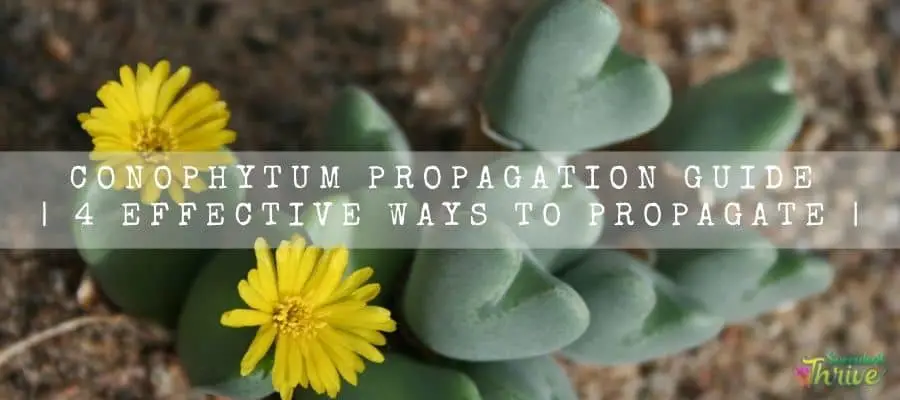
Can you propagate a conophytum?
Yes, you can easily propagate them.
You could use several methods to propagate Conophytum plants. They are by using cuttings, seeds and by using the leaves.
In addition to that many people use division also to propagate the Conophytum plants. Propagation through cuttings is the most famous way of propagating these plants.
Conophytum would usually grow cramped in pots. Further they are slow growing plants.
If you wish to learn more about the propagation methods of Conophytum plants, continue reading the article as it would be very useful.
Conophytum propagation by Seed
If you wish to use the seed propagation method, it will require a lot of effort from you, but that will give you the most reliable results. As such, all your efforts will be paid off at the end.
- To start off, you need to first wait until Autumn arrives. That will help the seeds to grow well since the Autumn humidity condition will release the new growth of the new roots.
If you are someone who does not want to wait, this induced artificial climate would suit you well.
When choosing the right soil to grow the Conophytum, it is important that you provide them a well-draining and a porous soil medium.
A free draining loam-based soil mix would perfectly fit in here. In case if you do not have this mix available, you could go ahead with a substrate for succulents which have a significant amount of gross sand.
It is crucial that we provide the aforesaid soil mix as Conophytum plants consist with fragile roots and that will allow their roots to spread faster.
You could grow the Conophytum plants in the plastic pots and that would be the best. I would not recommend growing them in clay pots as they could dry fast.
Best is to grow them in pots which are more like pans since Conophytum have shallow roots.
- You could first grow them in a seed tray without directly growing them in pots also.
- However, In case you sow them in a seed tray, you need to transplant them only in late autumn only. Further use a fresh soil medium to a fresh soil mix when transplanting them.
- After you planted the seeds, you need to gently press them down without making them sink in the pots. You May also use flat wood or paper to lightly press them.
- Next, you could water the seeds lightly too.
- Ensure that you are keeping the pot moist, and it is closed when the germination process takes place. It will take about two weeks.
- To cover the containers, you could use glass, plastic, or something else which would help them to keep warm and moist.
Avoid exposing them to intense temperatures. Ideally, they would prefer to have a temperature range of 15ºC (59ºF) and 20ºC (68ºF) during daytime.
On the other, they would thrive well if they are exposed to a temperature range of 5ºC (41ºF) to 10ºC (50ºF) during nighttime.
- Once the germination process completes, you need to open the germination trays so that the plants will slowly accustom to the air.
- These plants are not dependent on compost a lot.
- However , it would be better if you could add fertilizer when they grow and once they complete flowering.
- This is not mandatory to do, and you could do it only if you wish to do so.
- When the growth takes place, you could see both weakly growing and vigorously growing plants.
- In that circumstance I would recommend you take off the weak plants.
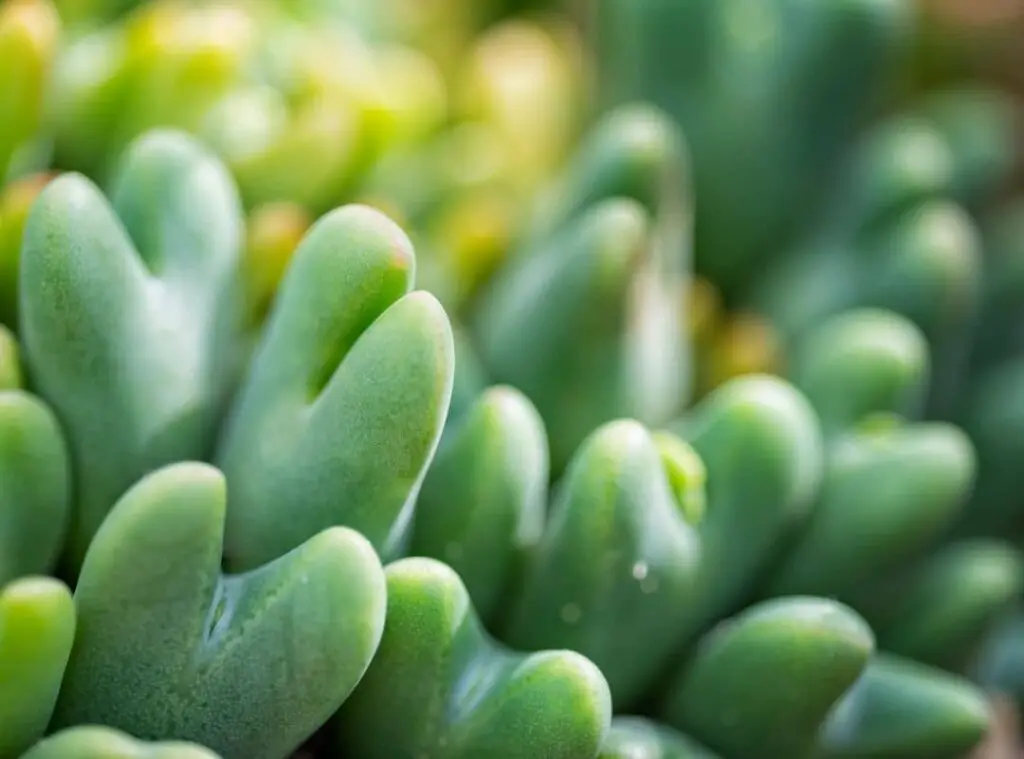
Conophytum propagation by Leaf cuttings
- First take off a leaf whilst twisting off gently without harming the plant.
When you take off the leaf, you should make sure that you are obtaining the whole leaf and there are no leftovers of the leaf remaining on the plant.
- Place the cuttings in a container or even in a tray. You need to locate them in a dry place.
- Leave them that way for about five days which will allow those cut edges to become callous.
When those cut edges become callous, it would avoid any potential bacterial infections. You could spot them growing roots within a few week/s time.
- Once you spot, they have formed roots, you could arrange a container in which you have added a well-draining soil mix.
- Alternatively, you could use a location in the garden which is suitable to plant them.
- Apart from that you may also add a handful of sand or perlite into ordinary potting medium too.
- After that, locate them somewhere where they get enough sunlight.
You could consider mounding soil so that these cuttings could raise up to the container edges or garden surface.
- Further you could tamp the soil as that will help to safeguard the roots.
- Skip watering them for a couple of days and resume watering them only after that. When the new plants acclimate to the new growing conditions, they will start to grow faster and vigorously.
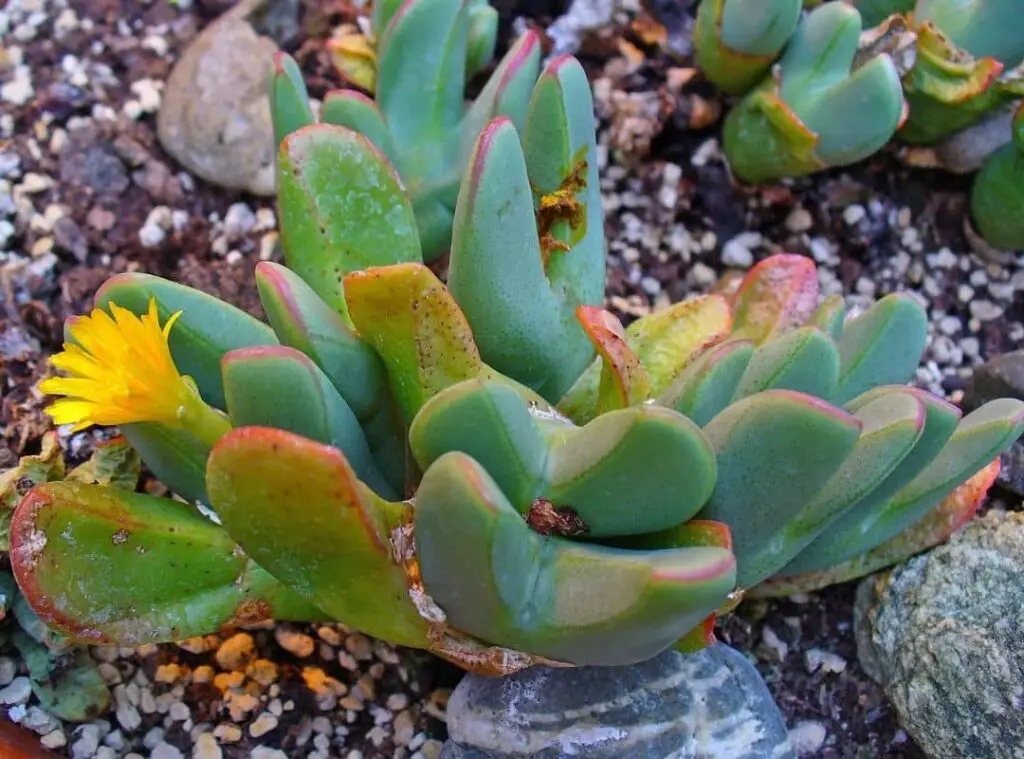
Conophytum propagation by Stem cuttings
As aforesaid, the stem cutting method is the easiest and the most famous way of propagating these plants.
- First of all, you need to obtain those cuttings a few millimeters below the base of the plant. That is the base of the body adjoined with the woody stems.
- Just like in the leaf method, you need to allow those stem cuttings also to wither and become callous for a few days. That will allow you to avoid any probable bacterial infection.
- Next you may arrange an acidic growing medium by mixing sieved, well composted soil medium and coarse river sand at even ratios.
- Once you place the cuttings in the pot, you need to expose them for morning sunlight and some shade during the afternoon hours.
- Skip watering for a couple of days. You could use warm water sprays to moisten them during autumn and spring seasons. Continue with their regular care treatments.
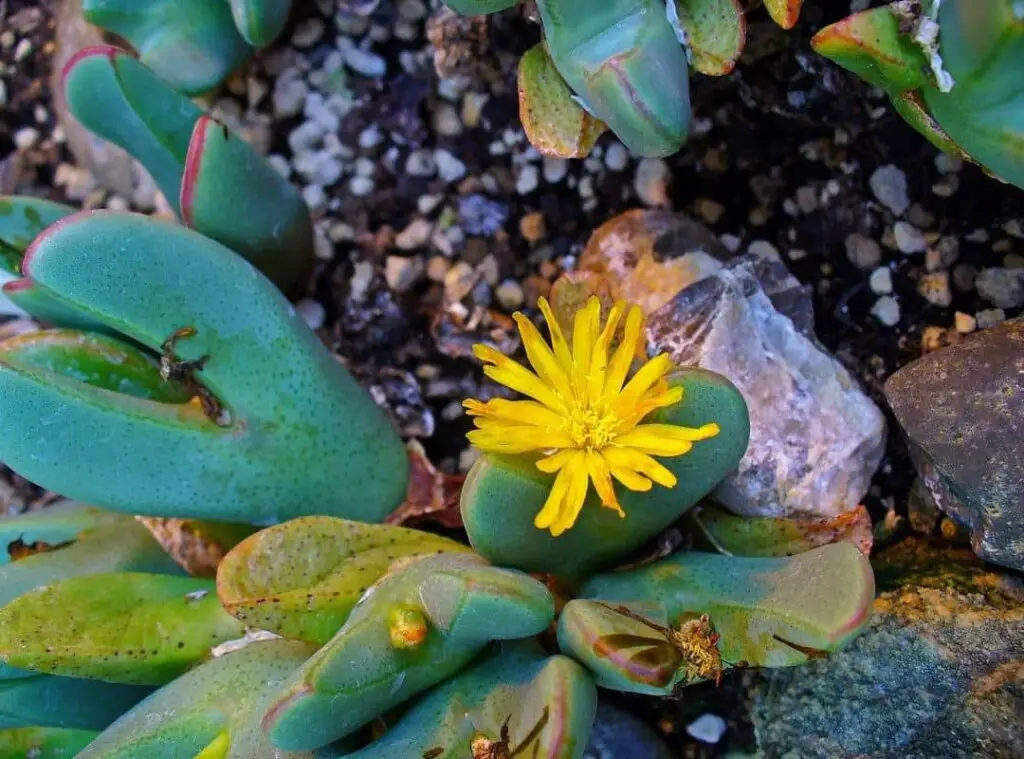
Conophytum propagation by Division
You could propagate these plants from division as well.
- I would recommend dividing the mature Conophytum plants into clusters first. They should include 2-4 rooted pairs of leaves.
- Next you may take out the plant from the pot.
When doing this you need to gently cut through the roots and repot each cluster into its individual pots.
- Summer or early fall would be the perfect times to conduct this process since that would be before the dormancy or after the flowering is done.
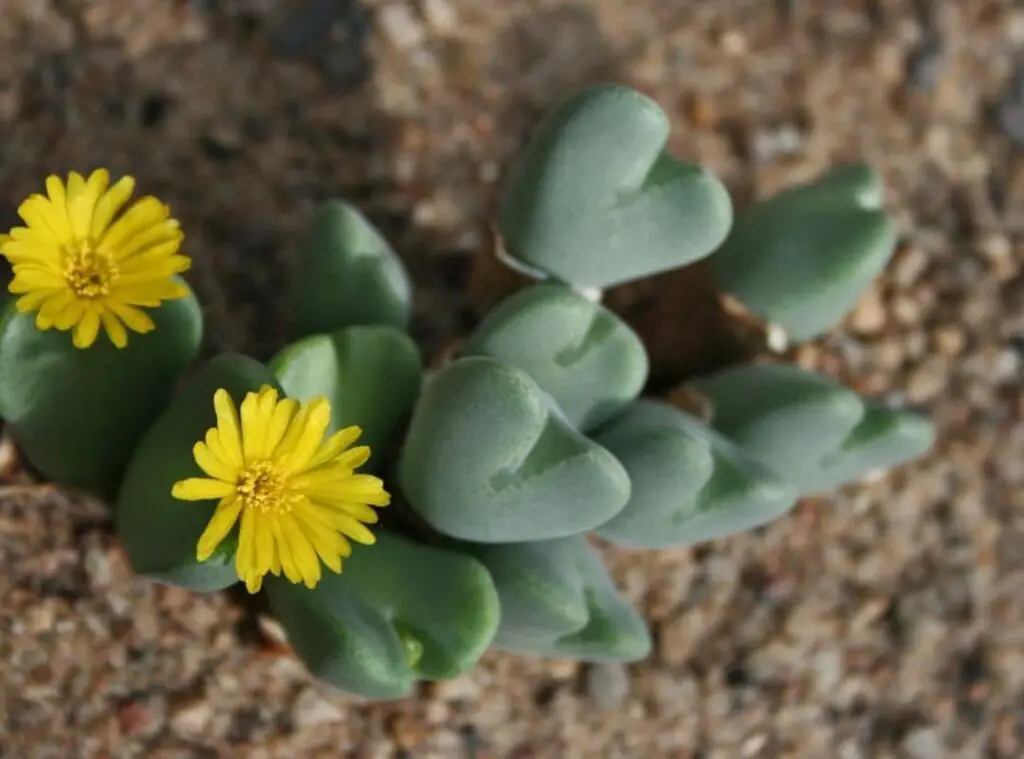
How to treat after Conophytum propagation
Watering
Watering is very crucial when taking care of these plants after propagating them. Do not over water them and avoid soaking them with water.
Best is to apply the soak and dry method when watering them. Further you need to water these plants during autumn and in winter once every three to four weeks.
However, when it is February, you need to increase watering as by then the new leaves would be starting to form.
When they reach dormancy, you could limit watering them. In fact, you could not water them at all and in case you could spot your plant wrinkled only you could consider lightly watering them.
Light
The exposure for adequate sunlight is helpful for them to maintain their variety of colors as well.
Further, It is important that you provide adequate sunlight during their growth process as well. In other words, if it is winter, you need to locate them in the brightest sunny spot at your house.
When the winter season is getting over, you need to minimize exposing them to bright sunlight. If you do so, it will cause sunburns in the plant.
As such, I would recommend placing them in a shady place during the summer season, so that you could protect your beloved plants from intense sunlight.
Soil
Make sure that you are providing them a well-draining soil mix with mineral composition such as sand, gravel.
Further it should consist of small quantities of potting soil and peat too.
Fertilizing
These plants are not dependent on fertilizers a lot. They could stay in the same potting medium for a few years.
However, ensure that it is not chalky. As such you need to feed them moderately.
Potting
When it comes to selecting the right pot, you need to always select the plastic pots. In case if you use clay pots, that will dry out rapidly which will be unhealthy for these plants.
You could ideally grow them in pots which are more like pans since these plants have shallow roots.
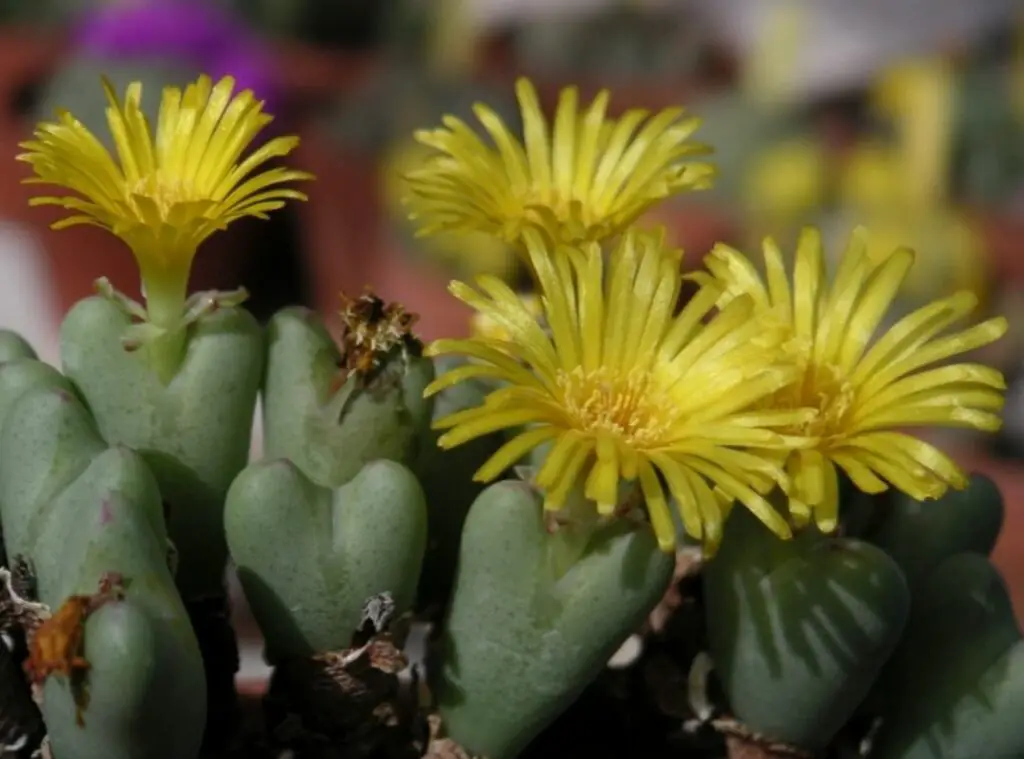
Conclusion
You can propagate Conophytum by seeds, leaf cuttings, stem cuttings or division. The best method depends on your preference.
If you follow the right guidance, you can easily propagate Conophytum in your garden.
Trust this article has enhanced your knowledge on how to conduct propagation of Conophytum plants. So hurry up and start propagating the Conophytum plants and make new plants.
Read Next: Aeonium Kiwi Propagation Guide | 5 Effective Ways To Propagate |
